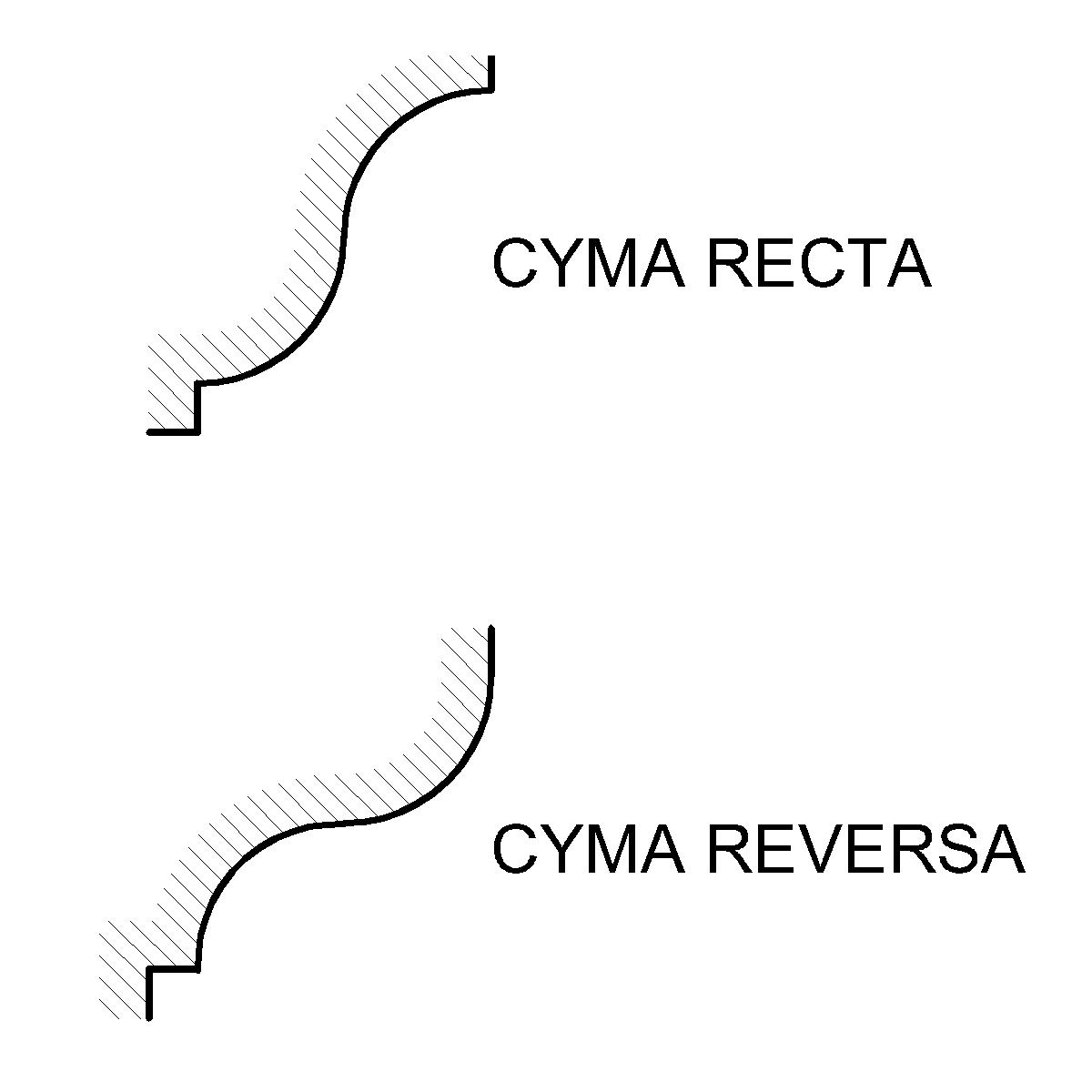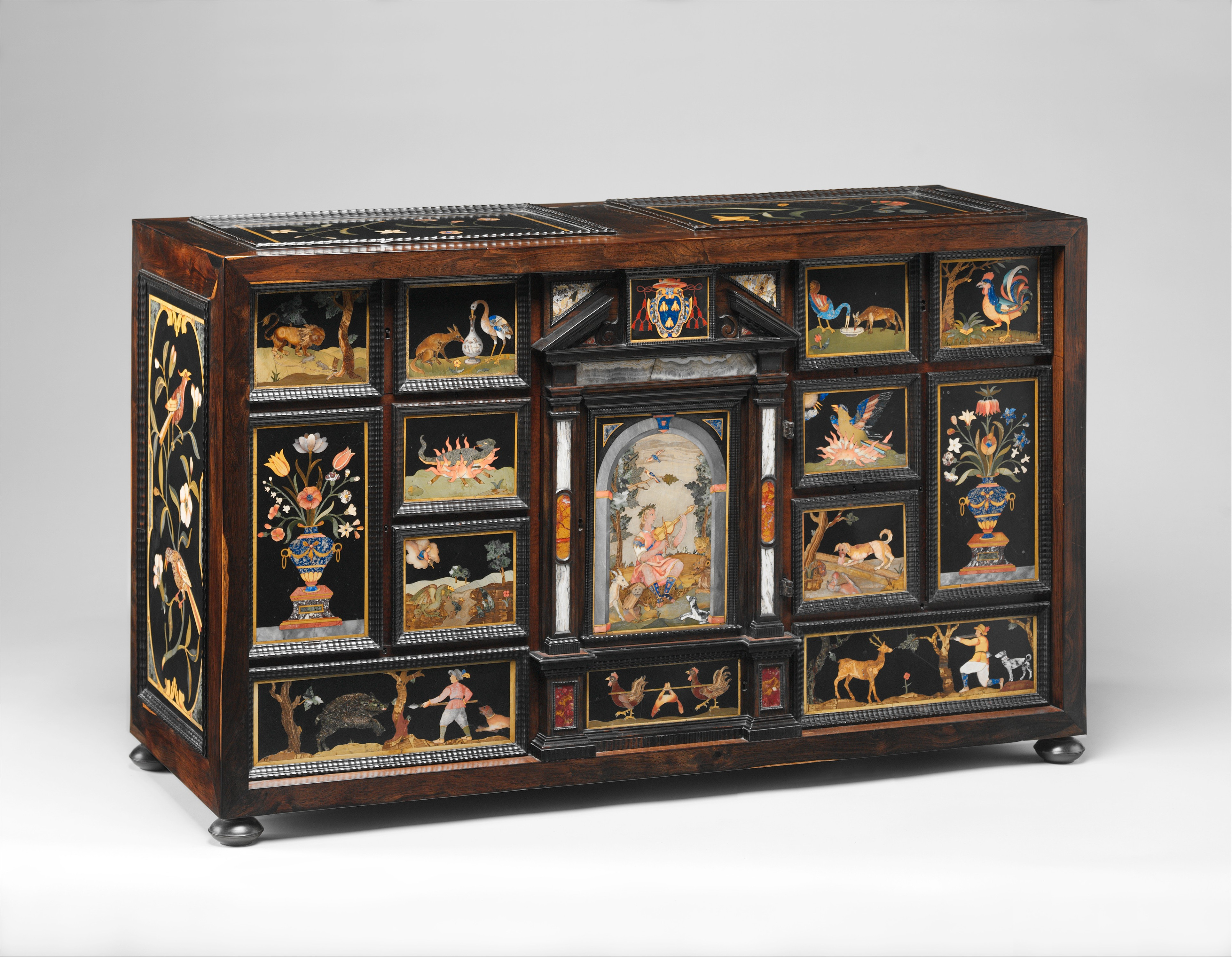|
Ovolo
The ovolo or echinus is a convex decorative molding profile used in architectural ornamentation. Its profile is a quarter to a half of a more or less flattened circle. The 1911 edition of ''Encyclopædia Britannica'' says:adapted from Ital. ''uovolo'', diminutive of ''uovo'', an egg; other foreign equivalents are Fr. ''ove'', ''échine'', ''quart de rond''; Lat. ''echinus''... s usedin architecture, ora convex moulding known also as the echinus, which in Classic architecture was invariably carved with the egg and tongue. In Roman and Italian work the moulding is called by workmen a quarter round. The "egg and tongue" referred to, also known as egg-and-dart, egg-and-anchor, or egg-and-star, refers to alternating egg and V-shapes enriching the surface of the concave ovolo in many early cases. The description of ovolo as the fundamental convex quarter-round element underlying or being combined with other elements to compose molding, details on column capitals, and other archit ... [...More Info...] [...Related Items...] OR: [Wikipedia] [Google] [Baidu] |
Molding (decorative)
Moulding (spelled molding in the United States), or coving (in United Kingdom, Australia), is a strip of material with various profiles used to cover transitions between surfaces or for decoration. It is traditionally made from solid milled wood or plaster, but may be of plastic or reformed wood. In classical architecture and sculpture, the moulding is often carved in marble or other stones. A "plain" moulding has right-angled upper and lower edges. A "sprung" moulding has upper and lower edges that bevel towards its rear, allowing mounting between two non-parallel planes (such as a wall and a ceiling), with an open space behind. Mouldings may be decorated with paterae as long, uninterrupted elements may be boring for eyes. Types Decorative mouldings have been made of wood, stone and cement. Recently mouldings have been made of extruded PVC and Expanded Polystyrene (EPS) as a core with a cement-based protective coating. Synthetic mouldings are a cost-effective alternative ... [...More Info...] [...Related Items...] OR: [Wikipedia] [Google] [Baidu] |
Cavetto
A cavetto is a concave moulding with a regular curved profile that is part of a circle, widely used in architecture as well as furniture, picture frames, metalwork and other decorative arts. In describing vessels and similar shapes in pottery, metalwork and related fields, "cavetto" may be used of a variety of concave curves running round objects. The word comes from Italian, as a diminutive of ''cave'', from the Latin for "hollow" (it is the same root as cave). A vernacular alternative is "cove", most often used where interior walls curve at the top to make a transition to the roof, or for "upside down" cavettos at the bases of elements. The cavetto moulding is the opposite of the convex, bulging, ovolo, which is equally common in the tradition of Western classical architecture. Both bring the surface forward, and are often combined with other elements of moulding. Usually they include a curve through about a quarter-circle (90°). A concave moulding of about a full semi ... [...More Info...] [...Related Items...] OR: [Wikipedia] [Google] [Baidu] |
Egg-and-dart
Egg-and-dart, also known as egg-and-tongue, egg-and-anchor, or egg-and-star, is an ornamental device adorning the fundamental quarter-round, convex ovolo profile of moulding, consisting of alternating details on the face of the ovolo—typically an egg-shaped object alternating with a V-shaped element (e.g., an arrow, anchor, or dart). The device is carved or otherwise fashioned into ovolos composed of wood, stone, plaster, or other materials. Egg-and-dart enrichment of the ovolo molding of the Ionic capital was used by ancient Greek builders, so it is found in ancient Greek architecture (e.g., the Erechtheion at the Acropolis of Athens), was used later by the Romans and continues to adorn capitals of modern buildings built in Classical styles (e.g., the Ionic capitals of the Jefferson Memorial in Washington, D.C., or the ones of the Romanian Athenaeum from Bucharest). Its ovoid shape (the egg) and serrated leaf (the dart) are believed to represent the opium poppy and its leaves. ... [...More Info...] [...Related Items...] OR: [Wikipedia] [Google] [Baidu] |
Ogee
An ogee ( ) is the name given to objects, elements, and curves—often seen in architecture and building trades—that have been variously described as serpentine-, extended S-, or sigmoid-shaped. Ogees consist of a "double curve", the combination of two semicircular curves or arcs that, as a result of a point of inflection from concave to convex or ''vice versa'', have ends of the overall curve that point in opposite directions (and have tangents that are approximately parallel). First seen in textiles in the 12th century, the use of ogee elements—in particular, in the design of arches—has been said to characterise various Gothic and Gothic Revival architectural styles. The shape has many such uses in architecture from those periods to the present day, including in the ogee arch in these architectural styles, where two ogees oriented as mirror images compose the sides of the arch, and in decorative molding designs, where single ogees are common profiles (see opening i ... [...More Info...] [...Related Items...] OR: [Wikipedia] [Google] [Baidu] |
Cymatium
Cymatium, the uppermost molding at the top of the cornice in the classical order, is made of the s-shaped cyma molding (either ''cyma recta'' or ''cyma reversa''), combining a concave cavetto with a convex ovolo. It is characteristic of Ionic columns and can appear as part of the entablature, the epistyle or architrave, which is the lintel or beam that rests on the capitals of columns, and the capital itself. Often the cymatium is decorated with a palmette or egg-and-dart ornament on the surface of the molding. The heights of the parts of the capital are to be so regulated that three of the nine parts and a half, into which it was divided, lie below the level of the astragal on the top of the shaft. The remaining parts are for the cymatium, abacus, and channel. The projection of the cymatium beyond the abacus is not to be greater than the size of the diameter of the eye f the voluteIn the case of a concave-convex profile, a distinction is made between cyma recta and cyma revers ... [...More Info...] [...Related Items...] OR: [Wikipedia] [Google] [Baidu] |
Neoclassical Architecture
Neoclassical architecture is an architectural style produced by the Neoclassical movement that began in the mid-18th century in Italy and France. It became one of the most prominent architectural styles in the Western world. The prevailing styles of architecture in most of Europe for the previous two centuries, Renaissance architecture and Baroque architecture, already represented partial revivals of the Classical architecture of ancient Rome and (much less) ancient Greek architecture, but the Neoclassical movement aimed to strip away the excesses of Late Baroque and return to a purer and more authentic classical style, adapted to modern purposes. The development of archaeology and published accurate records of surviving classical buildings was crucial in the emergence of Neoclassical architecture. In many countries, there was an initial wave essentially drawing on Roman architecture, followed, from about the start of the 19th century, by a second wave of Greek Revival archi ... [...More Info...] [...Related Items...] OR: [Wikipedia] [Google] [Baidu] |
Cabinetry
A cabinet is a case or cupboard with shelves and/or drawers for storing or displaying items. Some cabinets are stand alone while others are built in to a wall or are attached to it like a Bathroom cabinet, medicine cabinet. Cabinets are typically made of wood (solid or with Wood veneer, veneers or artificial surfaces), coated steel (common for medicine cabinets), or synthetic materials. Commerce, Commercial grade cabinets usually have a melamine-particleboard substrate and are covered in a high pressure decorative laminate, commonly referred to as Wilsonart or Formica. Cabinets sometimes have one or more doors on the front, which are mounted with Door furniture, door hardware, and occasionally a Lock (security device), lock. Cabinets may have one or more doors, Drawer (furniture), drawers, and/or Shelf (storage), shelves. Short cabinets often have a finished surface on top that can be used for display, or as a working surface, such as the countertops found in kitchens. A cabinet ... [...More Info...] [...Related Items...] OR: [Wikipedia] [Google] [Baidu] |
Stile And Rail
Frame and panel construction, also called rail and stile, is a woodworking technique often used in the making of doors, wainscoting, and other decorative features for cabinets, furniture, and homes. The basic idea is to capture a 'floating' panel within a sturdy frame, as opposed to techniques used in making a slab solid wood cabinet door or drawer front, the door is constructed of several solid wood pieces running in a vertical or horizontal direction with exposed endgrains. Usually, the panel is not glued to the frame but is left to 'float' within it so that seasonal movement of the wood comprising the panel does not distort the frame. Frame and panel construction at its most basic consists of five members: the panel and the four members which make up the frame. The vertical members of the frame are called stiles while the horizontal members are known as rails. A basic frame and panel item consists of a top rail, a bottom rail, two stiles, and a panel. This is a common method o ... [...More Info...] [...Related Items...] OR: [Wikipedia] [Google] [Baidu] |
Cyma Recta Et Reversa
Cyma may refer to either: * An S-shaped decorative molding, used in the cymatium of Greek architecture * CYMA – Canadian Youth Mission to Armenia, a Canadian-run humanitarian program * CYMA (software) CYMA is the name of a series of accounting software packages. History ''CYMA Systems earliest software, introduced in 1980, was DOS-based; as of 2021 most packages require either "Windows 7 or higher,", Unix or Linux. Current offerings are for g ..., accounting packages * Cyma Watches, a Swiss watch-making company * Cyma Zarghami, the president of Nickelodeon and MTV Networks' Kids & Family Group * The ICAO code for Mayo Airport {{disambig ... [...More Info...] [...Related Items...] OR: [Wikipedia] [Google] [Baidu] |
Washington, D
Washington commonly refers to: * Washington (state), United States * Washington, D.C., the capital of the United States ** A metonym for the federal government of the United States ** Washington metropolitan area, the metropolitan area centered on Washington, D.C. * George Washington (1732–1799), the first president of the United States Washington may also refer to: Places England * Washington, Tyne and Wear, a town in the City of Sunderland metropolitan borough ** Washington Old Hall, ancestral home of the family of George Washington * Washington, West Sussex, a village and civil parish Greenland * Cape Washington, Greenland * Washington Land Philippines * New Washington, Aklan, a municipality *Washington, a barangay in Catarman, Northern Samar *Washington, a barangay in Escalante, Negros Occidental *Washington, a barangay in San Jacinto, Masbate *Washington, a barangay in Surigao City United States * Washington, Wisconsin (other) * Fort Washington (disambigu ... [...More Info...] [...Related Items...] OR: [Wikipedia] [Google] [Baidu] |
Erechtheion
The Erechtheion (latinized as Erechtheum /ɪˈrɛkθiəm, ˌɛrɪkˈθiːəm/; Ancient Greek: Ἐρέχθειον, Greek: Ερέχθειο) or Temple of Athena Polias is an ancient Greek Ionic temple- telesterion on the north side of the Acropolis, Athens, which was primarily dedicated to the goddess Athena. The building, made to house the statue of Athena Polias, has in modern scholarship been called the Erechtheion (the sanctuary of Erechtheus or Poseidon) in the belief that Pausanias' description of the Erechtheion applies to this building. However, whether the Erechtheion referred to by Pausanias is indeed the Ionic temple or an entirely different building has become a point of contention in recent decades. In the official decrees the building is referred to as “... το͂ νεὸ το͂ ἐμ πόλει ἐν ο͂ι τὸ ἀρχαῖον ἄγαλμα” (the temple on the Acropolis within which is the ancient statue). In other instances it is referred to as the ... [...More Info...] [...Related Items...] OR: [Wikipedia] [Google] [Baidu] |




_-_facade_on_Piazza_dei_signori.jpg)

